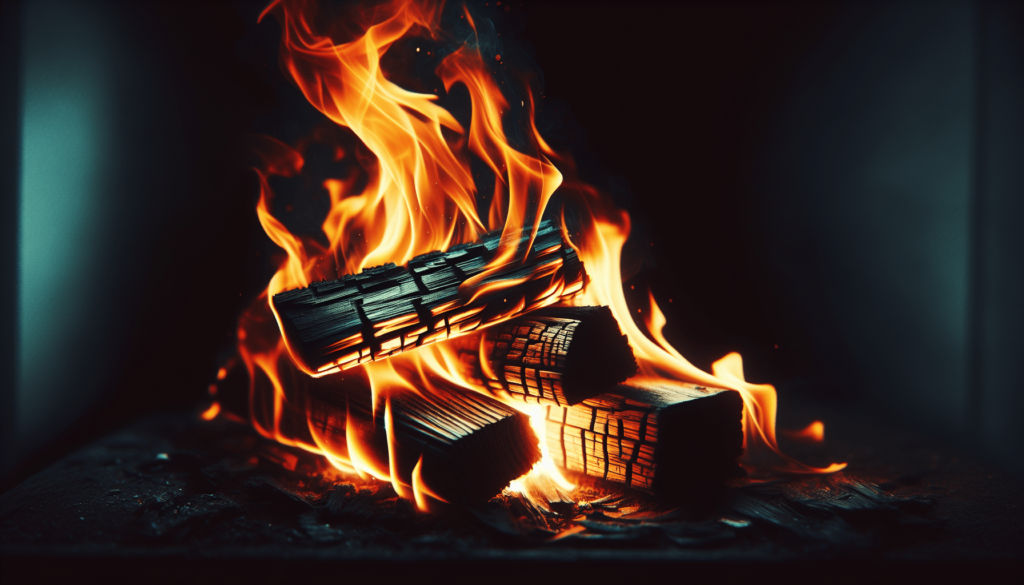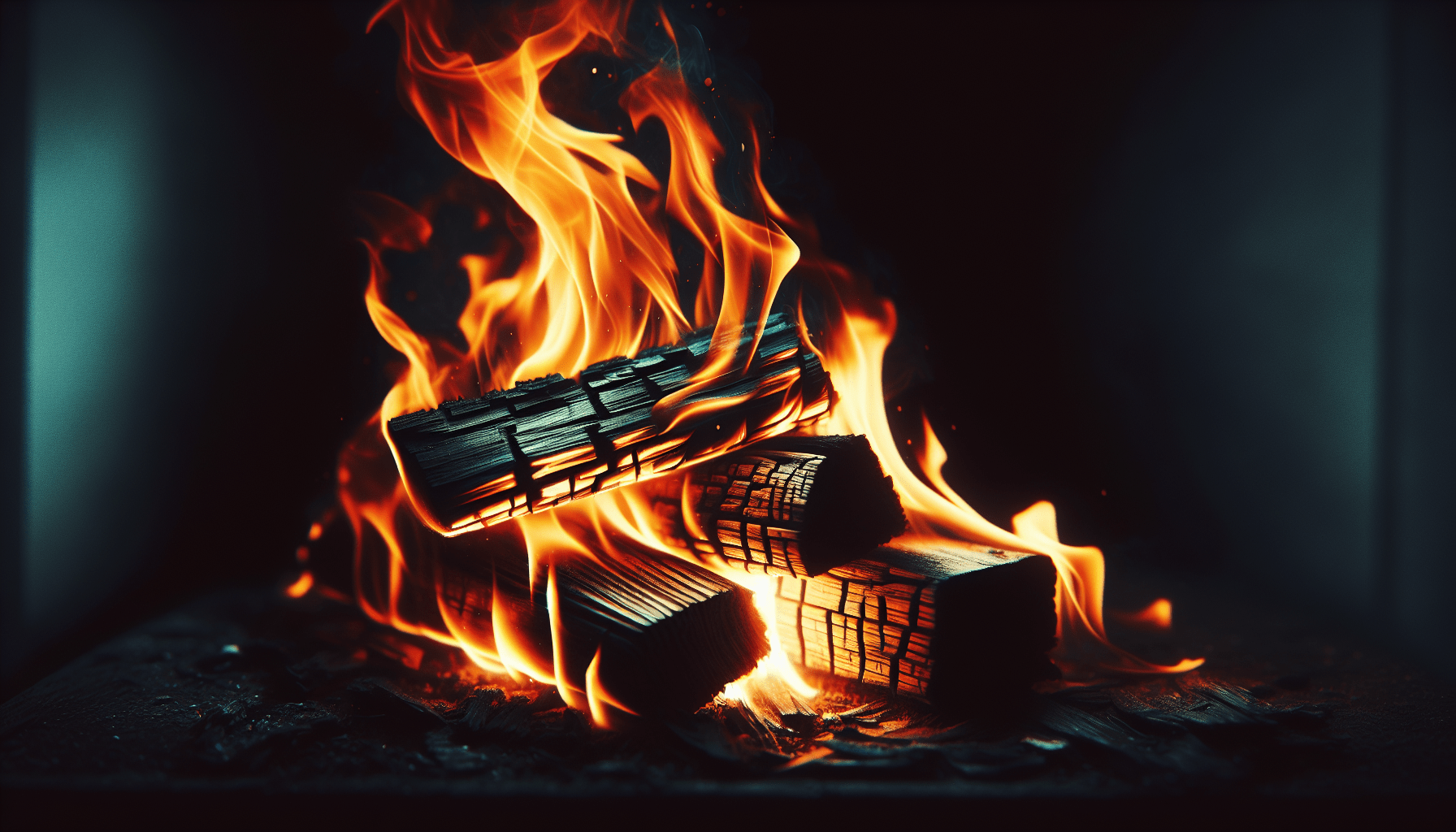Have you ever found yourself staring at an old pile of treated wood, wondering if you can burn it without any repercussions? It’s a common dilemma, especially if you’re clearing out a shed or breaking down an old deck. You might think, “Wood is wood, right?” But as it turns out, this question isn’t as straightforward as it seems.

What is Treated Wood?
Treated wood, as its name implies, has been treated with various chemicals to enhance its durability and resistance to elements like termites, fungus, and moisture. This makes it an ideal material for outdoor projects such as fences, decks, and outdoor furniture. The treatment process involves pressure-treating the wood to ensure the chemicals penetrate deeply, thus providing long-lasting protection.
So, while your treated wood might weather the elements better than its untreated counterparts, burning it raises some serious concerns.
Why is Treated Wood Treated?
The primary reason for treating wood is to extend its life and durability. Left untreated, wood can decay and become a haven for insects and fungi. Here are some common chemicals used for treating wood:
| Chemical | Purpose |
|---|---|
| Chromated Copper Arsenate (CCA) | Protects against insects and decay |
| Alkaline Copper Quaternary (ACQ) | Similar to CCA but without arsenic |
| Copper Azole | An alternative to CCA and ACQ |
| Creosote | Common in railway ties and utility poles |
These chemicals interact with the wood, making it last longer. But they also introduce elements that could potentially be harmful when burned.
The Risks of Burning Treated Wood
You might think, “Okay, so there are chemicals. Big deal? Fire is fire, right?” Well, it’s a tad more complicated. Burning treated wood releases these chemicals into the air, which can be harmful to your health and the environment.
Health Concerns
When you burn treated wood, the chemicals can turn into toxic fumes. For instance, CCA-treated wood releases arsenic when burned, which is a potent carcinogen. Breathing in such fumes can cause a range of symptoms, from mild respiratory irritation to more severe illnesses. Here’s a breakdown of potential health effects:
| Chemical | Health Risks |
|---|---|
| Arsenic (from CCA) | Respiratory issues, cancer |
| Copper (from ACQ and Copper Azole) | Eye and lung irritation |
| Creosote | Skin and respiratory irritation, possible carcinogen |
Even standing near a fire of treated wood can expose you to these harmful substances. The toxins can also settle on nearby surfaces, posing a risk even after the fire is out.
Environmental Impact
It’s not just about personal health. Burning treated wood has broader implications for the environment. The chemicals released can contribute to air and soil pollution. This pollution can harm local wildlife and disrupt ecosystems. In a world where environmental conservation is more critical than ever, polluting the air with toxic fumes is a no-go.
Legal Restrictions
You might be asking yourself, “If it’s so dangerous, is it even legal to burn treated wood?” In many places, the answer is a resounding no. Laws and regulations often prohibit burning treated wood due to its harmful effects.
Local Regulations
Local regulations concerning the burning of treated wood vary, but many jurisdictions have strict rules in place. For example:
- In the United States, the Environmental Protection Agency (EPA) has guidelines that discourage burning treated wood.
- Certain states have specific regulations that make it illegal to burn treated wood under any circumstances.
Before you consider throwing that treated wood onto your fire pit, it’s wise to check your local regulations to avoid any legal repercussions.
Fines and Penalties
Disregarding these rules can lead to hefty fines and penalties. Not to mention, if someone were to get sick from inhaling the fumes, you could be held liable. These legal restrictions exist for good reason—mainly to protect public health and the environment.
Alternatives to Burning Treated Wood
Alright, so burning treated wood is off the table. What else can you do with it? Luckily, there are several alternatives that don’t involve inhaling noxious fumes or breaking the law.
Recycling and Reusing
One option is to recycle or reuse the wood. Many recycling centers accept treated wood and can process it safely. You can also get creative with reusing treated wood for projects that don’t involve burning, like garden beds, compost bins, or other outdoor structures.
Safe Disposal
If recycling isn’t an option, look into safe disposal methods. Many waste management services offer hazardous waste disposal options. This ensures that the treated wood is dealt with in a way that minimizes harm to people and the environment.
Repurposing
Another idea is repurposing the wood for indoor projects where its longevity is an asset. For example, use it for creating shelves, workbenches, or as structural support in areas that need extra protection from moisture or insects. This way, the wood serves a second purpose without putting anyone’s health at risk.

How to Identify Treated Wood
Before you go through all the trouble of figuring out what to do with your wood, you might need to confirm if it’s treated. Sometimes it’s obvious, but other times, it requires a closer look.
Visual Clues
Treated wood often has a distinctive greenish tint, especially when new. Over time, it can fade to a more natural wood color. It might also have small, evenly spaced holes where the chemicals were injected during the treatment process.
Markings
Manufacturers often stamp treated wood with specific codes or labels that indicate it’s been treated. These can be helpful identifiers if you’re unsure about the wood’s history. Look for abbreviations like CCA, ACQ, or similar.
Smell
Though less reliable, treated wood can sometimes have a distinctive chemical smell, especially if it was treated with creosote. This oily residue has a strong, tar-like odor.
Safety Precautions if You Must Burn It
Alright, let’s get real. Maybe you’re in a situation where burning treated wood seems like the only option. Perhaps it’s an emergency, or you’re out in the wild with limited resources. If you absolutely have to burn treated wood, there are certain precautions you should take to minimize the risks.
Burns in Open Spaces
Always burn treated wood in a well-ventilated, open space. This will help dissipate the harmful fumes more quickly and reduce your exposure. Never burn treated wood indoors or in enclosed spaces.
Stay Upwind
Position yourself upwind from the fire to avoid inhaling the smoke. This is a simple but effective way to protect your lungs from harmful fumes. The wind direction can change, so be mindful and adjust your position as needed.
Personal Protective Equipment
If possible, wear protective gear such as masks, gloves, and eyewear. These can provide some level of protection against the toxic particles and fumes released.
Conclusion
So, is treated wood safe to burn? The simple answer is no, it’s not. While it might seem like an easy solution to get rid of old wood, the risks far outweigh the convenience. Not only do you endanger your own health, but you also contribute to environmental pollution and could face legal consequences.
Instead, look into safer alternatives like recycling, reusing, or properly disposing of the wood. And if you absolutely must burn it, take every precaution necessary to minimize the risks. At the end of the day, your health—and the well-being of the environment—is more important than a quick and easy disposal method.
So, the next time you stare at that pile of treated wood, you’ll know exactly what to do. In the battle between convenience and safety, always choose the latter.

